|
- Team Associated RC10 Classic - Car Action - Review -
WORDS ERICH REICHERT PHOTOS PETER HALL
Team Associated rocked the RC world back in June when they announced that the 1984 gold-tub RC10 would be returning as a re-issued, limited-production model later in the year. Dubbed the RC10 Classic, the A-Team showed off a preproduction version of the car at RCX and it has been eagerly anticipated since. Our full review is in the January issue and its loaded with info about the new-old car, insights on its significance to RC history, and a detailed look at what it took to bring back the legend. Here’s a sneak peek, plus a video look at the RC10s new and old.
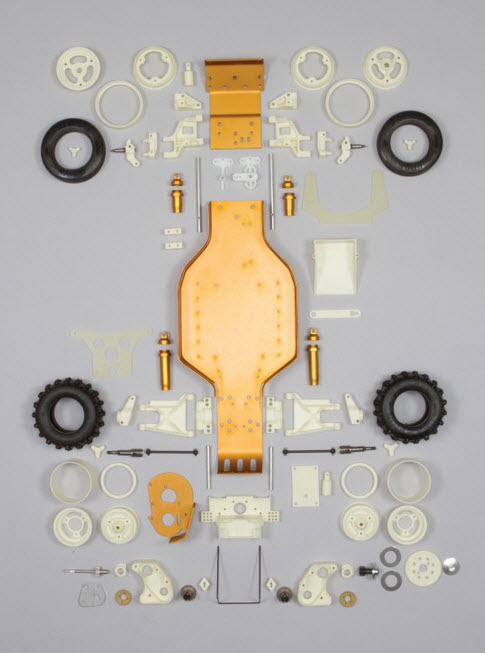
This “exploded view” shows off the gold-anodized aluminum chassis and white molded parts that instantly set the RC10 apart from the black-plastic buggies of the day. The RC10's overall simplicity also stood out against the often over-designed cars of the era. Like a true race car of any scale, the RC10 was all business.
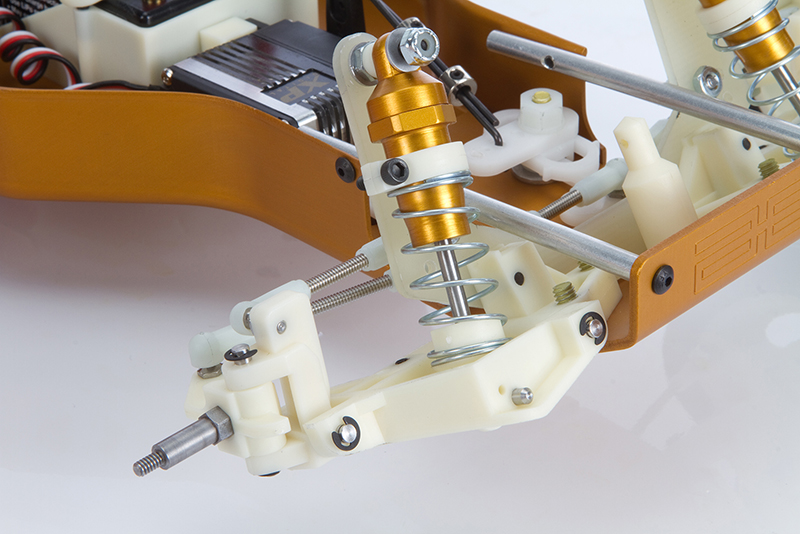
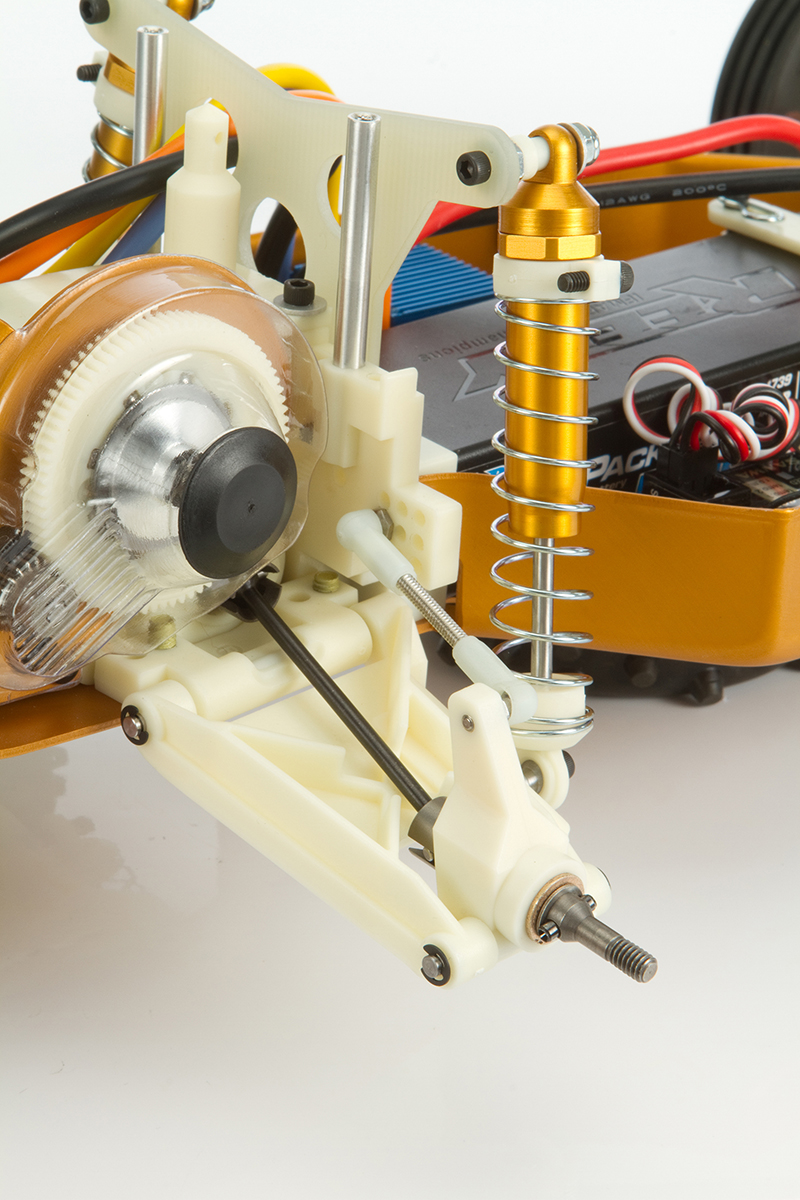
By today’s standards, the suspension is considered a short-arm design. The gold-anodized shocks look like the 1984 originals, but feature the top-loaded seal configuration of the later Team Shock design rather than the bottom-loaded, C-clip-secured seals spec’d in 1984.
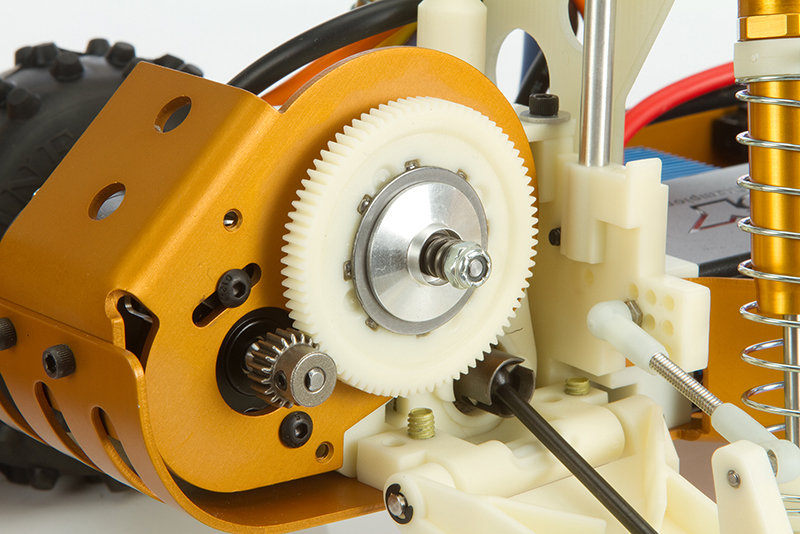
The transmission features an external ball differential where you would typically find a slipper clutch. Internally the top shaft leads to a set of twin drive gears that operate two sets of gears that make up each wheels independent transmission. Although there isn’t a slipper, the diff is adjustable without disconnecting the wheels or axles for quick adjustments.
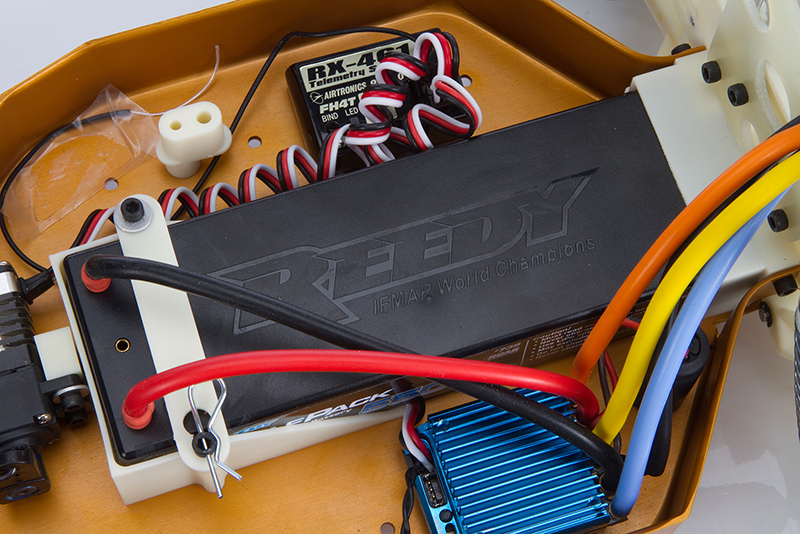
The RC10 Classic’s rear bulkhead and battery cup were altered to hold modern LiPo battery packs, which are larger than NiCD batteries that were used in the era of the original RC10.
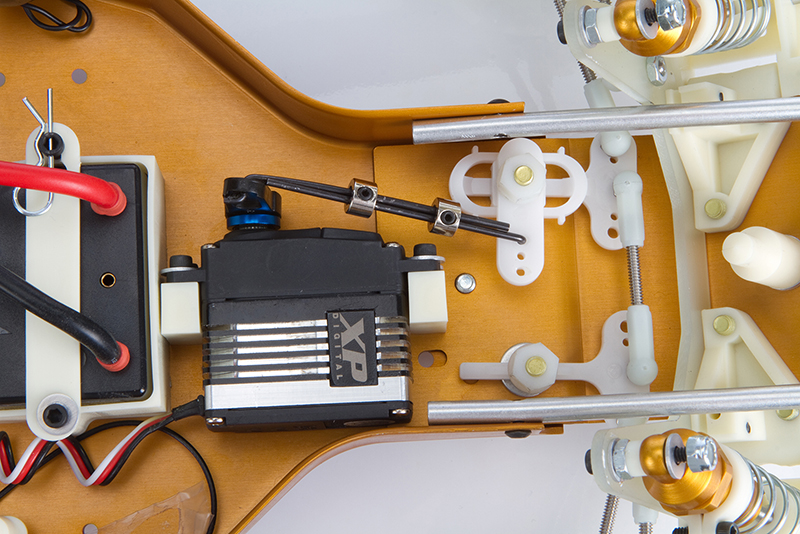
The RC10's dual bellcranks aren’t too far removed from modern designs, but the z-bend linkage that ties the steering servo to the bellcranks is definitely from a by-gone era. A closer look at the steering system reveals Team Associated’s first take on an integrated servo saver. The plastic loop stretches open to absorb any jolts strong enough to deflect the bellcrank from the upper arm.
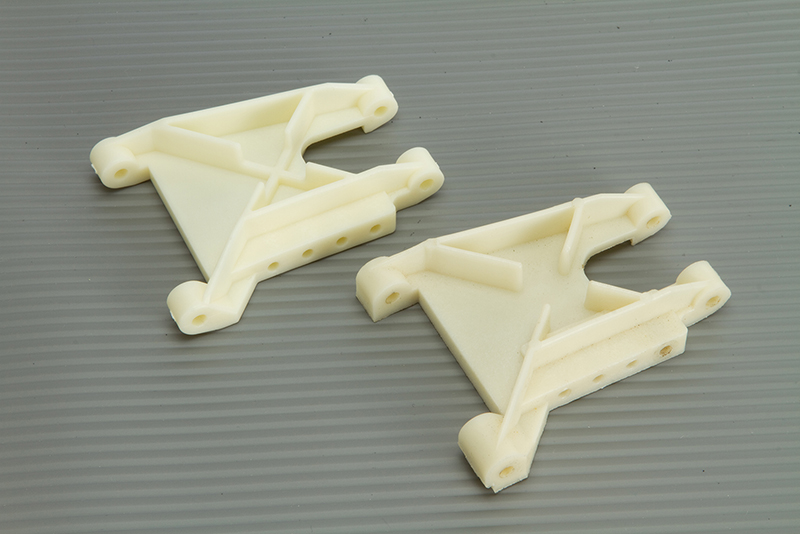
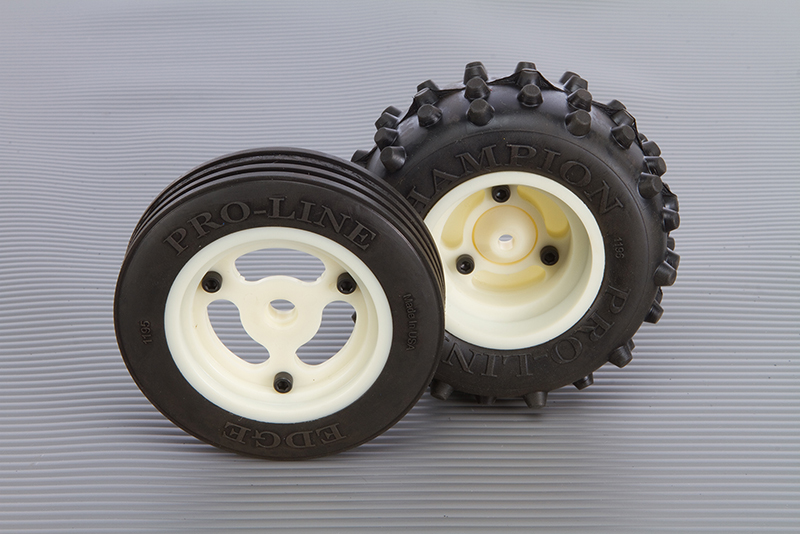
Because the RC10 is one of the most collectible vintage cars, Associated took pains to protect collector market by modifying the Classic’s parts so they could be easily differentiated from authentic, original parts. Most parts are marked with an “L” or “R” to designate which side they go on while other parts, like the arms have subtle design tweaks. For example, the rear arm’s braces cross on the Classic part, but are interrupted on the vintage arms. The Classic’s tires are also modified. The original tire’s sidewalls had “Goodyear” logos, Team Associated logos, or were blank. The Classic’s rubber is made by Pro-Line, and have the brand name molded into the sidewalls in an appropriately vintage font.
The resurrection of a historic vehicle that helped shape off-road racing and today’s RC hobby
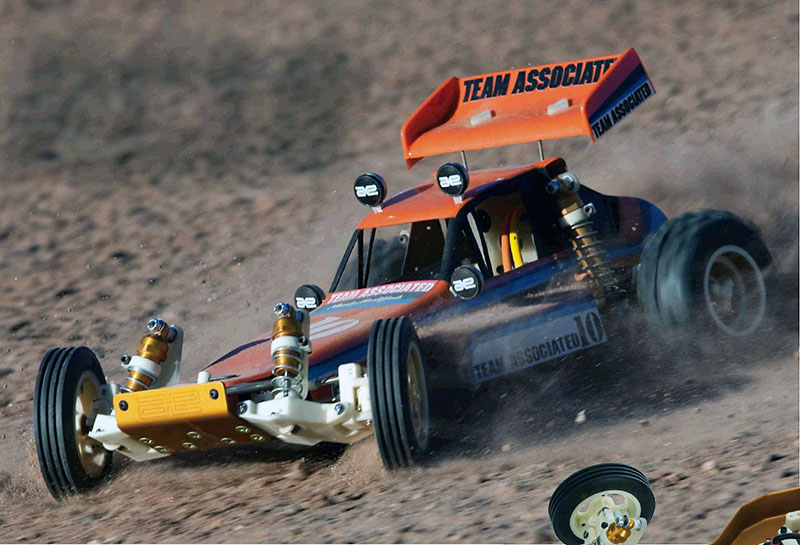
Without question, the RC10 revolutionized the world of off-road racing and the RC hobby as a whole. To racers and collectors alike, it’s one of the most important cars in the history of RC. The RC10 established the benchmark for off-road racing performance, and shaped the design of every car that followed it. Much has been said about its wild success, track prowess, and its modern legacy, and it’s clear that without the RC10, our hobby would be very different today. Over the course of 16 years, the RC10 won eight national championships, four world titles, and the hearts of off-roaders around the world.
And so, it was little surprise that news of the impending re-release of the original gold-tub RC10 set the RC world on fire. But rather than just re-run the old tools and dies to build a nostalgia car for collectors, Team Associated polished the RC10 to create a model that is faithful to the original but also meets Associated’s modern standards for precision and durability. Parts were reengineered and revised to hold up to today’s more powerful brushless motors, and while some things had to be retooled entirely, they aimed to make the parts slightly different to protect the collectible side of the car’s popularity. Before even being available, the final product has become one of the most popular releases of the year. So, without further delay, we give you the reborn version of one of the most popular RC cars of all time, the Team Associated RC10 Classic.
FEATURES
TUB CHASSIS
The RC10 was the first RC buggy to feature an aluminum tub chassis, a design that set it apart from all other designs of the time. Up front, a nose plate mounts to the tub and is supported by a pair of tubes for added strength. The center section of the chassis has holes to mount the battery cup either down the middle using the rear bulkhead as the other end or across the car in six positions to allow a side-to-side battery to be moved fore and aft on the buggy. The original format of the chassis has carried over but Associated has made it more user-friendly by drilling holes for a couple different sized servos to mount up, whereas on the original car, you had to drill your own holes (and many people messed this up). Team Associated also pre-drills the mounting holes for their Stealth transmission should you want to upgrade your buggy.
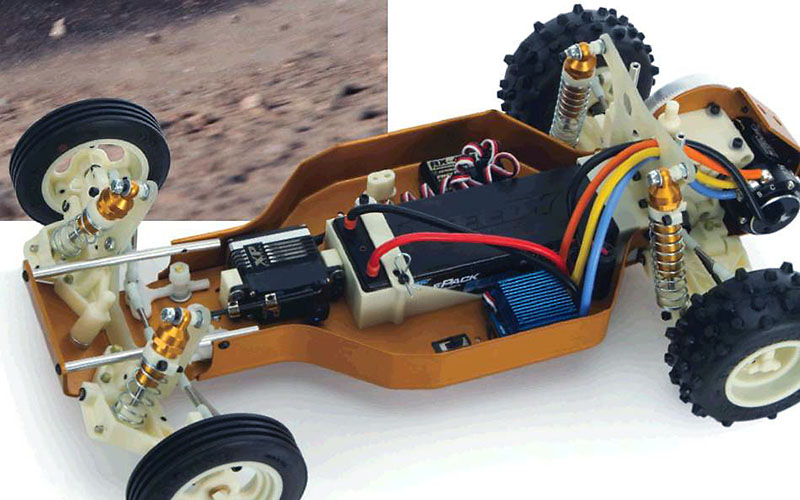
GOLD TEAM SHOCKS
The shocks on the very first RC10 were bottom loading with a C-clip holding the seals in place. Soon afterward, the older style was replaced by a body that housed a set of rubber seals and spacers loaded from inside the shock body. These also had a Teflon coating to make them smoother and more durable, and this style remained the standard for Associated shocks until the late 2000’s. The shocks on the reissue are anodized gold to resemble the original shocks, but due to the fact that the “Team Shocks,” as they were called, worked so much better, their design was spec’d for the new car. |
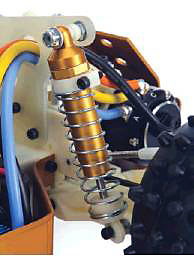
Associated spares us the original bottom load shocks that were difficult to build for a gold ano’d set of Team shocks. |
STANDARD-SETTING SUSPENSION
The RC10 features a very basic set of fiberglass towers with just one upper mounting hole for the shock. Before the RC10, shock towers were typically incorporated into the frame of the vehicle. The RC10’s plate shock towers were a huge departure that became the standard moving forward.
6-GEAR TRANSMISSION
To completely understand how the tranny in the RC10 changed the game, you need to understand that the car came out in 1984 when ball differentials were considered an option part offered by a handful of aftermarket companies. The RC10’s tranny, commonly known as the “6-Gear” tranny, was the first one to include a ball diff as standard equipment. Inside, it incorporates a spine plate that divides the transmission into two sets of three gears (top, idler, and outdrive). The ball differential is actually mounted outside the gearbox and is assembled on the spur gear, where you find the slipper clutch in a modern 2WD off-road car or truck.
REPLICA TIRES
The original RC10 included a set of 1.85-inch wheels and tires that were standard size for their day, but as racing progressed, motor technology increased and so did power output. Larger wheels with lower profile tires started to flood the market. To reproduce the tires from the original RC10, Team Associated partnered with Pro-Line Racing to create the same tread pattern and compounds. Rather than the one-piece type wheel you’re used to seeing, the wheels on the RC10 are a three-piece design that holds the tire between two halves rather than being glued in place. The harder compound rubber supports itself rather than having a foam insert.
BODIES
Unlike modern buggy body designs that have no pretense of scale realism, the RC10 was, and is, a very realistic-looking car. It comes complete with a full set of headlights to add and even has window netting molded into the side windows. It also includes a smaller rear wing than you may be used to and a set of Kimbrough-style wing buttons that more accurately replicate the ones pictured on the box rather than the teardrop -shaped wing buttons the original car included.
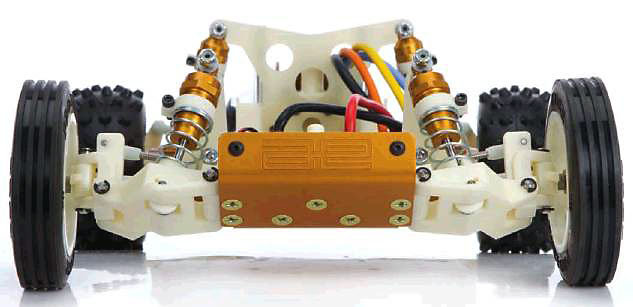
The front suspension on the RC10 Classic has very short arm geometry, but its design was a precursor to gull-wing arms. |
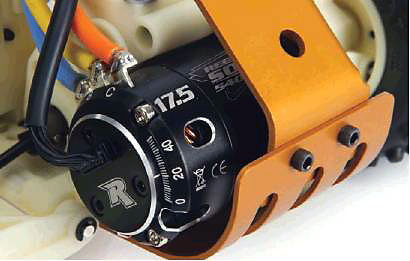
Power for our Classic came from a Reedy Mach 2 17.5 motor. The Mach 2 has plenty of power while keeping it “vintage” friendly. |
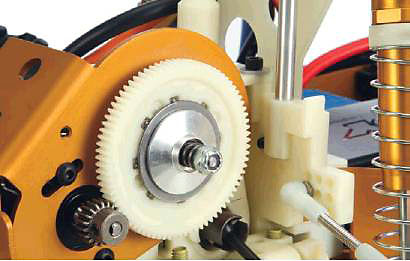
The Classic includes a 48-pitch spur gear and revised internal gears that are still 32-pitch, however, they’re made of better materials that make the buggy more brushless friendly. |
BEHIND THE WHEEL
Driving an RC10 is something special. It’s not going to drive like a modern buggy at all … after all, its design is 30 years old. It’s far narrower in comparison to modern 2WD buggies but it also uses a very short armed suspension that makes it a little more twitchy and unforgiving through bumps. For all these nuances and characteristics however, the RC10 is very fun and unique in the way it rides. The new transmission is very smooth considering its 32-pitch drivetrain and it was able to harness the speed of the Reedy Mach 2 17.5 motor with ease. Because LiPo batteries are far lighter than the batteries that rode along in these cars years ago, the buggy is very nimble and quick to respond, and it lands smoothly off jumps rather than slapping the ground due to the heavy weight of the Ni-Cd batteries. While the RC10 doesn’t handle exactly like a modern buggy, it’s a lot of fun to drive something vintage and should you choose to race it, there are vintage classes or you could modify it to bring its handling up to more modern specs.
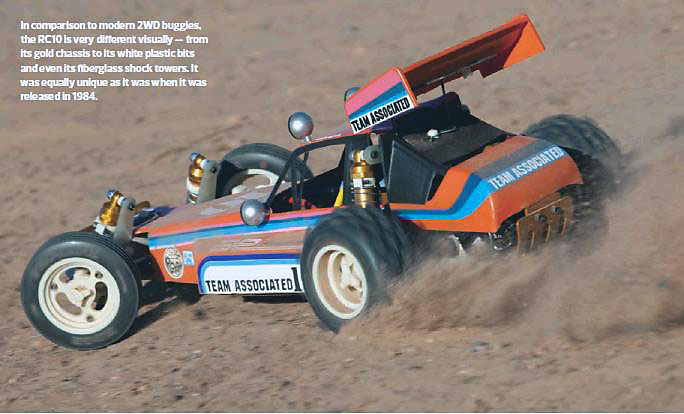
In comparison to modern 2WD buggies, the RC10 is very different visually — from its gold chassis to its white plastic bits and even its fiberglass shock towers. It was equally unique as it was when it was released in 1984.
The RC10 means so many things to so many people. Ask anyone who has been in the hobby for a while and you’ll find that they’ve at minimum seen an RC10 or known someone who has owned one. As their first official rerelease, the Classic represents a step in a new direction for Team Associated. From reengineering tooling for parts that have long been out of production to creating packaging that best represented the crown jewel of Associated’s racing heritage, recreating a legend like the RC10 was a task of epic proportion. The RC10 Classic could be considered a look back at better days or the way things used to be, but for others, it represents one of the most beloved cars in our history and brings it back to where it belongs — on your workbench.
WHAT’S NEW?
Team Associated paid close attention when rebooting the RC10. They recognized the need to protect the collectors that have kept the RC10 closest to their hearts while also revising the parts slightly so that identifying a new part from an old one was possible. You don’t have to be a pro to spot a rerelease part; we stripped down a true shelf queen RC10 straight from 1984 to show you the differences.
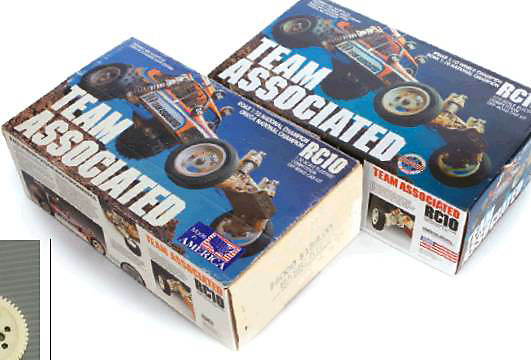
The first contrast from new to old you will encounter on the box is the image, which is noticeably richer than the original thanks to re-scanned artwork taken from the original photography. You’ll also notice a “Made in the USA” sticker on the old box along with one of two of Associate’s prior addresses (East Edinger, Santa Ana, CA, or Cadillac Dr., Costa Mesa, CA) versus Commercentre Drive, Lake Forest, CA, on the new one. There are a few other layout differences such as the body off car being the production version on the new box rather than the prototype on the original and the stamp on the end versus the repeated image. However, the big things that collectors look for are the address, the USA sticker, and a clean Edinger box — and these can go for some big money! |
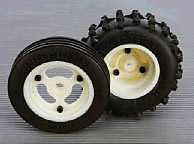
Pro-Line Racing worked alongside Team Associated to develop a set of tires for the Classic that both look and feel the part. The treads are exactly like the original tires and the compound is very firm just like it was 1984 all over again. The only difference is visual, as the new ones say “Pro-Line” and the tire’s model name rather than “Team Associated.”
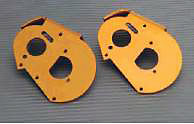
It’s hard to spot but easy to see once you know what to look for. The Classic’s motor plate has an extra hole drilled just below the D-shaped opening. This is to accommodate the Stealth transmission’s mounts if you want to upgrade.
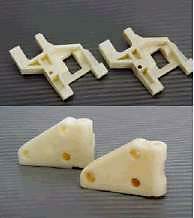
This one’s tough to spot. Many of the white plastic parts on the Classic are marked “L” and “R.” If you look just above the square opening on the middle of the arm on the left, you’ll see the circle with the L molded into it. The parts are otherwise identical. The front bulkheads are another part that has the molded letter for quick identification.
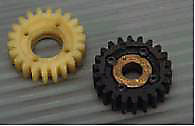
The tranny’s idler gears were problematic in the original car. The new gear (left) is stronger and molded of the same material Associated uses for its current cars — as are all of the RC10 Classic’s gears.
|
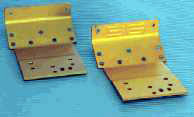
The original nose plates featured the “AE” logo stamped onto the front for all to see. The stamp pressed the metal through so it could be seen from inside too. The new nose plate features the same logo lasered into it, so there is no relief on the backside.
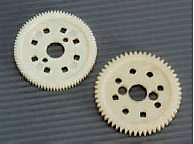
The spur gear on the original car was 32 pitch. Since then, we’ve moved exclusively to 48 pitch and the spur included in the Classic reflects that. This is one you should be able to spot from a mile away! The internal gears remain 32 pitch, however, to keep the integrity of the original buggy.
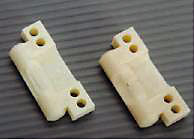
The rear arm mounts always had “L” and “R” molded in them, but the newer mounts use a smaller letter. You’ll also notice that the bracing around the center of the hingepin is cleaned up.
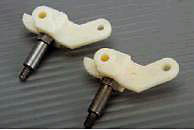
The steering arms take a little more time to identify. The newer arm has a single larger circle from the mold rather than the two smaller ones on older parts. Again, you can spot the difference in the finish on the axles.
|

Many of the new parts have better finishes than the originals. In 1984, manufacturing processes weren’t as detailed as they are these days. Note the more prominent metal grain of the vintage nose brace compared to the new version.
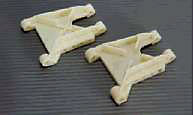
If you know your 10s, another obvious change is the rear arms. The inner hingepin section has been cleaned up and rounded versus the notched design of the old arms. You can also see that the new arm (above) has the X bracing carried all the way through where the old arms cut it short. This was actually a rolling change in production that debuted on the Worlds car in the early ’90s, but those arms were black.
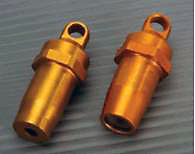
Be gone bottom-loaded shocks on the old car! The Classic uses a set of Associated’s original Team Shocks that have been anodized gold to look more like the originals.
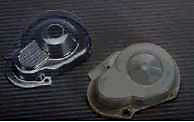
The difference between gear covers is night and day. The new cover is the same style as the Stealth transmission’s cover and is clear while the old part is frosted, and more simply shaped.
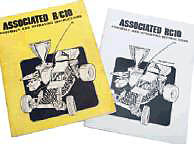
From the outside, the manual looks very similar except for the yellow color of the original. However, the artwork and instructions inside make it a lot easier to put the buggy together. |
THE MAN BEHIND THE RC10 CLASSIC
Team Associated’s Tim Tunnermann may have not been born yet when the original RC10 was created, but when he was assigned to the rerelease, he knew there was a lot of work to be done. Most of the tooling had been lost, broken, or simply discarded over the past 30 years, and the new RC10 needed to be recreated as close to the original as possible. We sat down with Tim to hear his story of bringing the RC10 back to life.
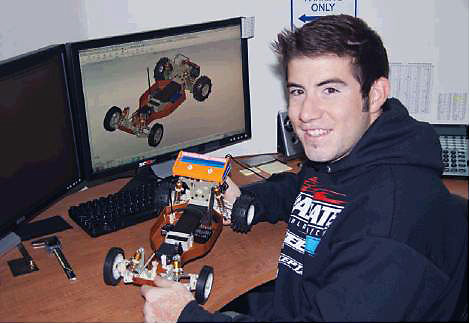
Tell us a little bit about your background with the RC10 before working for Team Associated?
I got into the hobby when I was around 10, so the RC10 was a little before my time. Although I had never owned an RC10, I at least knew a fair amount about it from working at a HobbyTown USA for three years in high school, and I would see them from time to time and work on them. Before starting on this project, I probably spent a week researching and learning about every single evolution of the car. I was able to find lots of great information on rc10talk.com to get a pretty good understanding of the basic evolution of parts, and I used a member as an RC10 resource. I then got into much more detail reviewing all the old hand drawings and notes, and talking to Roger Curtis, Cliff Lett, and Curtis Husting to get their personal accounts as to why some changes were made, and to get an idea of the issues that should be addressed. Now I’m an RC10 aficionado!
What were the goals and objectives in reproducing one of the most legendary production cars of all time?
The original goal was to make the car as close to the original RC10 released in 1984 down to every little quirk, use as much of the original tooling as possible, and even try to make most of it here in the United States. However, problems with this original concept began to pop up and we realized that there were lots of little things that changed over the years that helped make the RC10 even better. Perhaps the biggest issue was that the original car did not fit modern day batteries, whether they were LiPos or NiMH. Therefore, the decision was made to make changes necessary to fit modern batteries and to try and incorporate updates that were true to the original RC10, wouldn’t take away from the original appearance, and would help improve the quality of the car and ultimately the customer’s experience.
What was the state of most of the old tools you needed to produce the buggy?
Only about a quarter of the original molds were still in use and we had the remaining molds in the warehouse. However, to help ensure that all of the parts looked consistent in color, texture, etc., it made more sense to have everything molded in one place. Particularly because we would have to re-QC all the parts and at least retool a new rear bulkhead to fit modern batteries. It really just made the most sense to re-tool. I know a lot of die-hard AE fans may be disappointed about that but I know collectors would also be disappointed if the original tools were used because it would devalue their parts.
What was the process you went through to reproduce parts that were no longer available?
Fortunately, we still have almost all of the original hand drawings, so I was able to start from there. However, often times, some of the drawings I had did not have all of the revisions that were made to the part, so I would have to refer to brand-new original parts and confirm dimensions off of the actual part. Luckily, Curtis had a brand new Edinger kit that we used when needed to confirm with the original drawings. I would measure the original parts and adjust the CAD model as necessary to ensure new parts would be interchangeable with old parts. So, there was a lot of double checking and iteration with several parts. There were really only a couple parts, such as the headlights, that we no longer had drawings for and I had to completely draw off of the original part. It certainly was much more time consuming than just drawing up a typical new part.
With the collector market relying heavily on the RC10 as one of its top cars, how did Associated plan to produce the car without hurting the collectibility of the original parts and cars?
It was very important to us to not devalue current collectable RC10s, and we tried to make sure that there were ways of identifying new parts from old parts. An added benefit of retooling all the molded parts is that there will be noticeable molding differences between old and new parts, like where the part is gated and where ejector pins are located. Additionally, all of the new parts that have a left and a right have an “L” and an “R” embossed on them, which is a noticeable difference from the original parts. Machined parts are a little trickier because a good machine shop can replicate many of the parts on the car, however, the stamped chassis pieces are probably the most prized possessions of a collector, so we wanted to make sure that you could differentiate them from the originals by having a slightly different AE embossing on the nose plate, different battery cup holes on the chassis along with the absence of a letter stamping under the transmission, and a motor plate with stealth transmission holes and different tool markings. I think the average collector will have no problems spotting the differences between new and old.
You’ve been behind many of Associated’s largest projects. What does the RC10 Classic mean to you?
I’m really excited to be able to help recreate such an iconic car, and I know there are a lot of fans that are thrilled to see it re-released. The RC10 Classic has been unlike any other project I have had and has proved to be an even greater challenge than I had anticipated. Unlike other projects I’ve had, I had to essentially copy something that already existed but even just trying to find a new manufacturer for the stamped chassis components was difficult because it was a manufacturing method that isn’t as popular nowadays. Additionally, we had to ensure that the plastic parts and anodizing colors were close to the original. All the hard work is worth it knowing how many happy AE fans there are out there who are pumped to get a fresh RC10!
Is the A-team planning on releasing any option parts?
We are certainly planning on releasing a variety of option parts for the RC10 platform, and want to help provide parts to repair existing RC10s, as well as encourage vintage racing. Some of the parts we have coming out soon are the World’s steering rack and conversion kits to be able to run standard-size wheels and tires for the vintage racers! Also, more parts are soon to follow!
THE MANY FACES OF THE RC10
The RC10 wore many looks over its official 10 years on top. While there were a bunch of spinoff cars, the buggy as we know it had six generations before it and was completely overhauled and replaced by the RC10B2. Here are the basics on each of the versions of the RC10 in the evolutionary chain of one of the greatest buggies of all time.
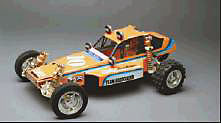 Original | 1984 This one is considered by collectors to be split into two subversions: the “standard,” which is what’s commonly known as the RC10, and the “original,” which is referred to as the “Edinger” edition (a throwback to the street address of Team Associated when the RC10 was released). Both share broad stroke features, but the Edinger came with a few early production parts: a lighter gold chassis due to a difference in the anodizing procedure, single hole rear shock towers, “Goodyear” sidewall tires, a clear gear cover, and the most coveted of all Edinger parts, Associated RC10 spring cups, which held the springs on the outside. Original | 1984 This one is considered by collectors to be split into two subversions: the “standard,” which is what’s commonly known as the RC10, and the “original,” which is referred to as the “Edinger” edition (a throwback to the street address of Team Associated when the RC10 was released). Both share broad stroke features, but the Edinger came with a few early production parts: a lighter gold chassis due to a difference in the anodizing procedure, single hole rear shock towers, “Goodyear” sidewall tires, a clear gear cover, and the most coveted of all Edinger parts, Associated RC10 spring cups, which held the springs on the outside.
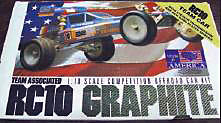
Graphite | 1989 As its name indicates, the Graphite featured a graphite chassis, universal driveshafts, a wider front suspension, and a new front shock tower and turnbuckles.
Championship Edition (CE) | 1990 The tub chassis returned for the CE but featured the new wider front suspension of the Graphite along with larger wheels.
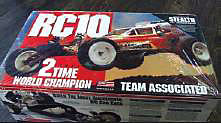
Team Car | 1990 The Team Car was a huge step in the development of modern RC racecars. It features hard-anodized shocks, a black anodized chassis, 1-piece wheels, and its biggest feature, the Stealth transmission that featured a low rotating mass, 3-gear design, and internal ball diff.
Championship Edition Update | 1992 With the wildfire success of the Stealth tranny, Associated opted to slug it in the CE for club racers. This iteration of the CE also received the black-anodized tub chassis.
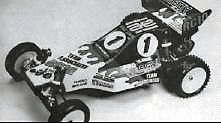
Worlds Car | 1994 To commemorate Brian Kinwald’s domination at the IFMAR Worlds, Associated released a replica of Brian’s winning buggy. It featured all-new front and rear shock towers and a milled black tub chassis that reduced weight. All of the molded parts were remolded in black and the car included new rear hubs, bellcranks, and yellow one-piece wheels. There was also a short run of cars with a graphite chassis similar to Masami Hirosaka’s Stealth car.
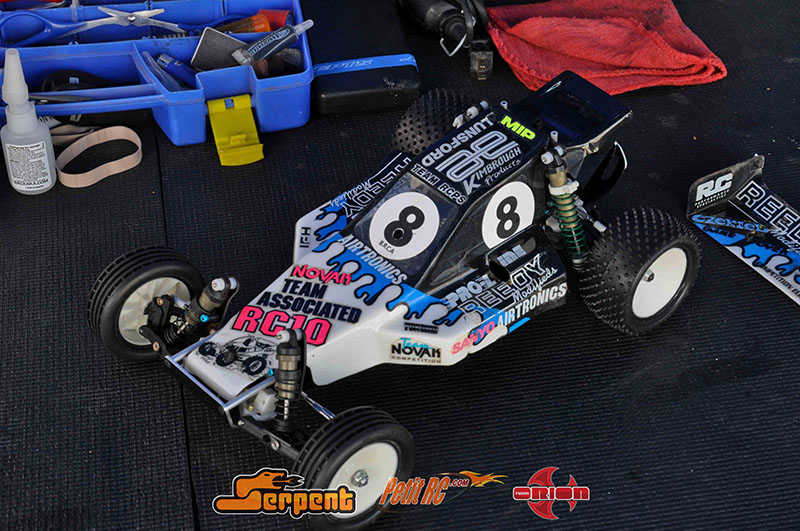




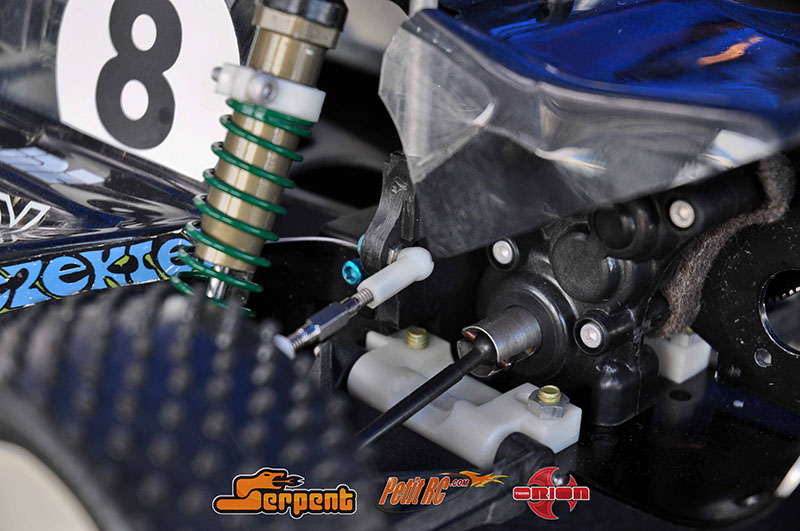
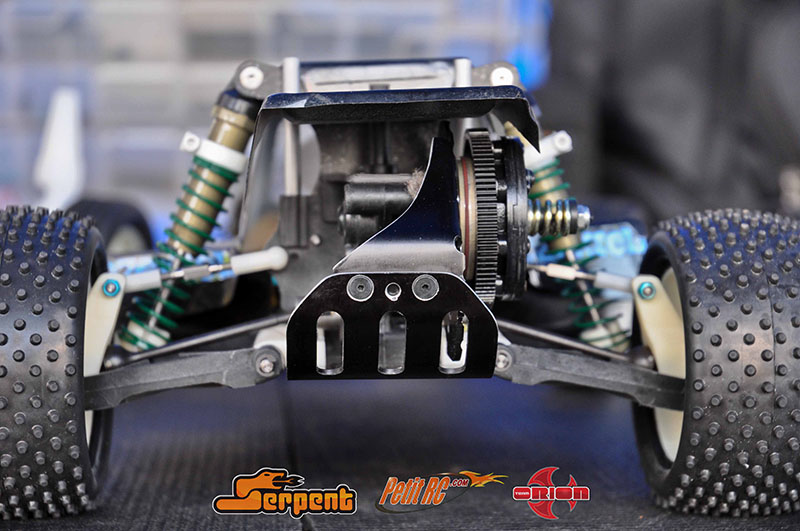

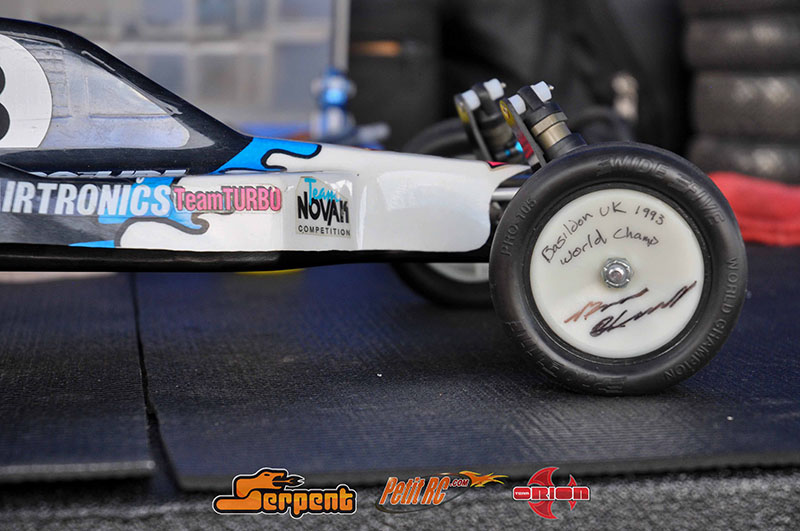
THE RC10 THAT NEVER WAS
Associated’s team drivers were famous for fabricating their own parts. Many made it into new cars but some never saw the light of day. The granddaddy of Associated “factory works” cars is the mysterious Stealth car that was raced by Masami Hirosaka on his way to back to back IFMAR World Championships in Australia and Detroit in 1989 and 1991. At the time, the Stealth car was shrouded in mystery and only a handful of distant shots of it ever came out. Design cues to the Worlds Car, B2, and many other vehicles in Associated’s lineage borrow from the Stealth and its legend is one of the most heralded in off-road racing history.
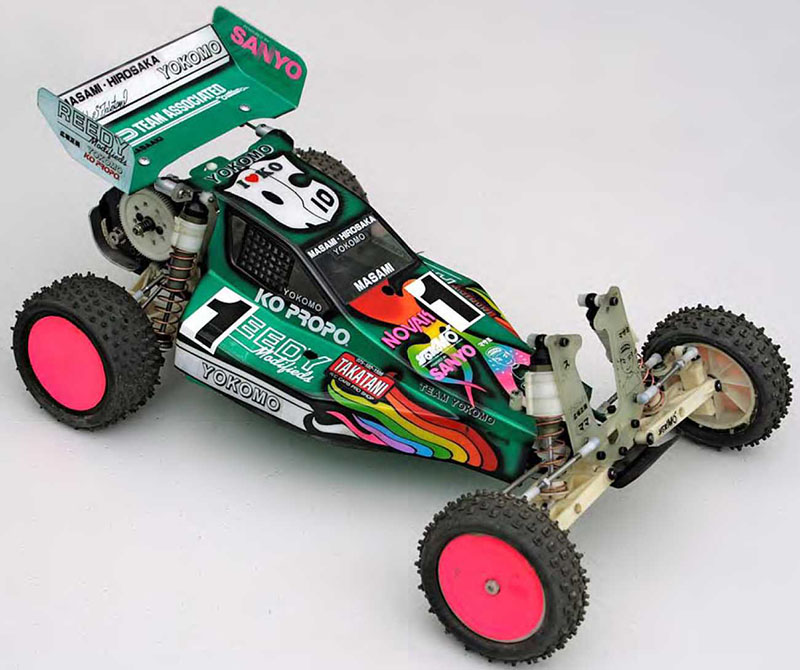
Considered by collectors to be the Holy Grail of RC10s, the Stealth car dominated the Worlds in Australia and Detroit in the early 90s as a one-off prototype. Its design was so heavily guarded that no one was even allowed to take a picture of the car!
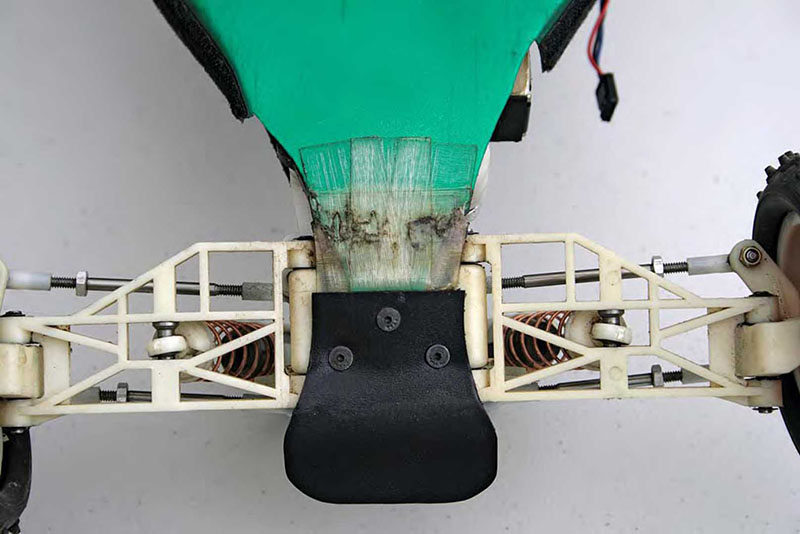
The Stealth was the first car to run the extremely narrowed front ends that we’ve come to expect in 2WD buggies today. It all started here.
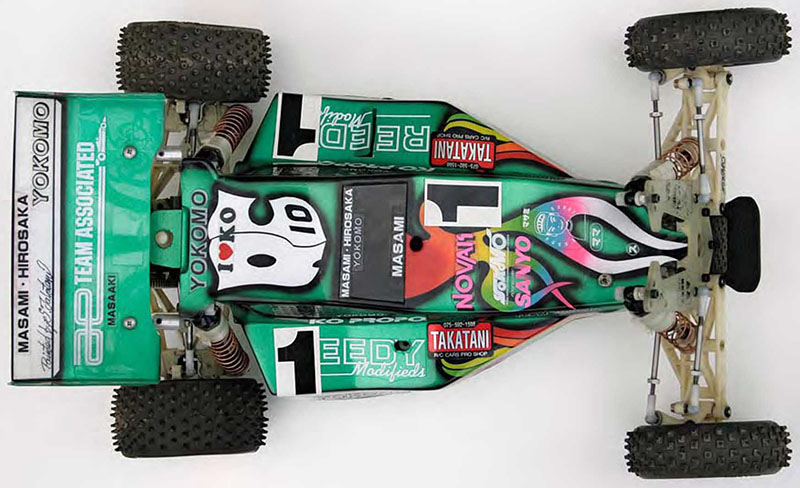
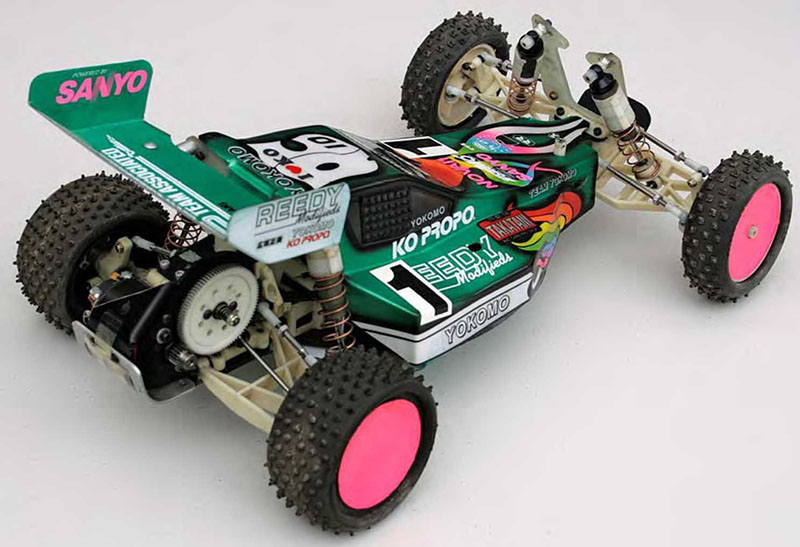
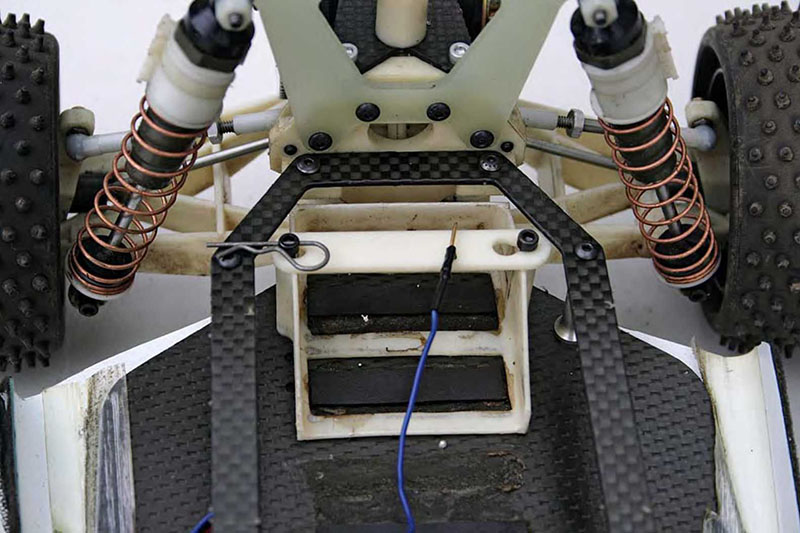
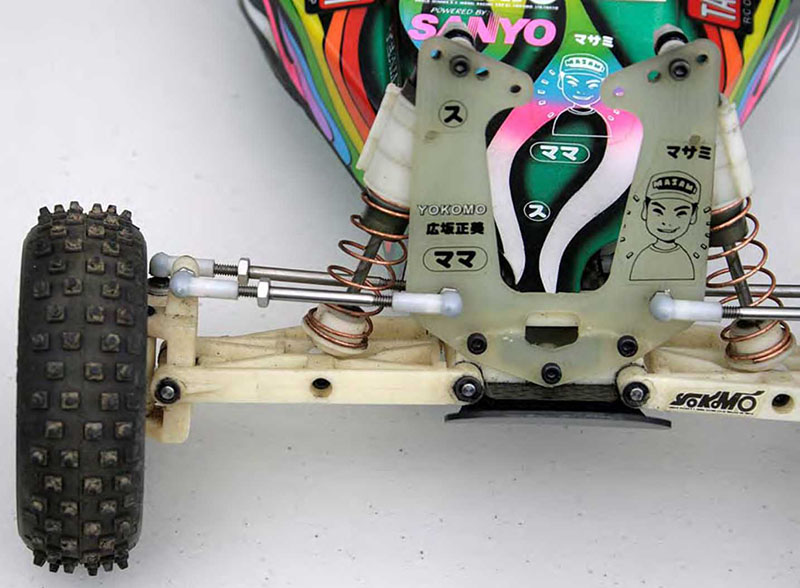
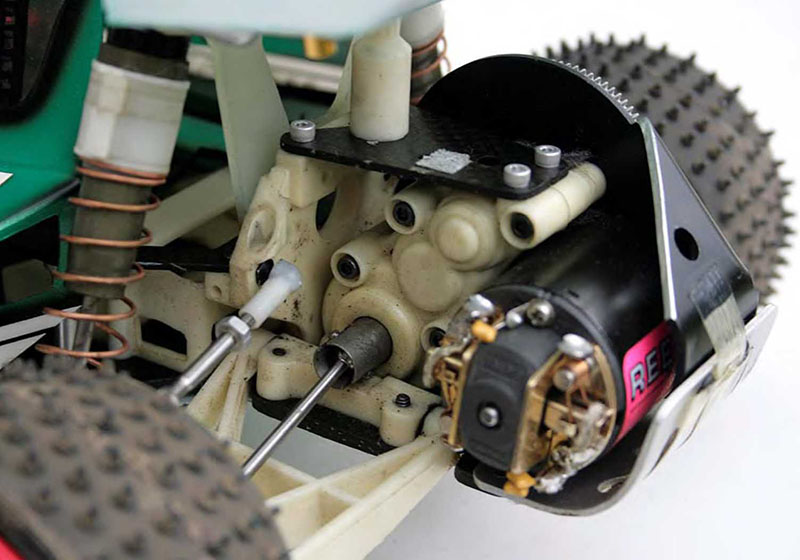
See more about this car on robobugs.
RC10 IN THE MOVIES
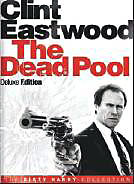 |
World championships aside, the RC10 was a star everywhere it went in 1988. When Warner Brothers called for the newest Dirty Harry movie to involve a car chase using a bomb-equipped RC car, the fledging off-roader was heavily modified to make its big screen debut. At the skillful hands of Associated factory driver Jammin’ Jay Halsey, the Corvette-bodied and blacked-out RC10 took to the streets of San Francisco to put an end to our hero once and for all. Nothing could stop this explosive little buggy — not even the busy streets and crowded sidewalks; but Clint had plans to get away. |
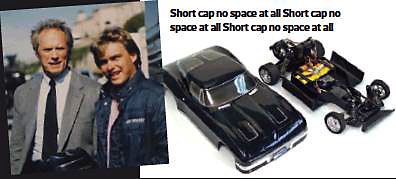
Short cap no space at all Short cap no space at all Short cap no space at all |
Source:

|
